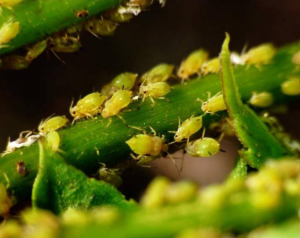Aphids, commonly known as greasy beetles, honey beetles, etc., are Hemiptera Aphididae pests, and are a common pest in our agricultural production. There are about 4,400 species of aphids in 10 families that have been found so far, of which about 250 species are serious pests to agriculture, forestry and horticulture, such as the green peach aphid, the cotton aphid, and the yellow apple aphid. The size of aphids is small, but the damage to crops is not small at all. The most fundamental reason is that it reproduces quickly and easily develops drug resistance. Based on this, the control agents are also being updated year by year, from organophosphates in the 1960s, to carbamates and pyrethroids in the 1980s, to neonicotinoids and now pymetrozine and quaternary ketoacids Wait. In this issue, the author will introduce a brand-new pesticide, which provides a new pesticide rotation and mixing tool for the control of resistant piercing-sucking pests. This product is diprocyptone.
Dipropionate (development code: ME5343) is a propylene compound (pyropenes), which is fermented by natural fungi. Mechanism of action of biogenic pesticides. It is mainly used for contact killing and stomach poisoning, and has no systemic properties. It is mainly used to control various piercing-sucking mouthpart pests such as resistant aphids, planthoppers, Bemisia tabaci, whiteflies, thrips, leafhoppers, and psyllids. It has the characteristics of wide insecticidal spectrum, quick effect, high activity, no drug resistance and low toxicity. It can be either foliar treatment, seed treatment or soil treatment.
Post time: Jul-14-2022





